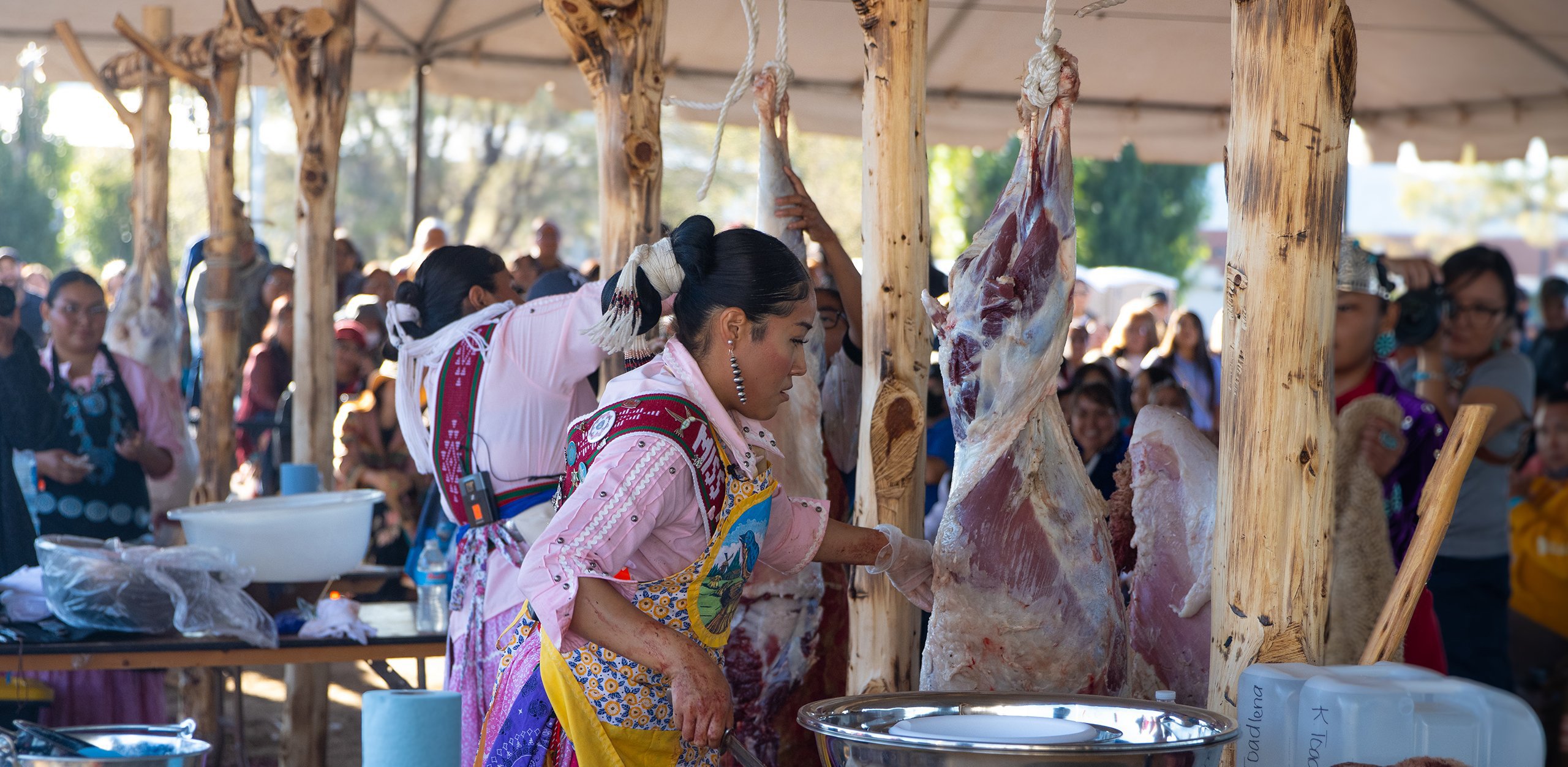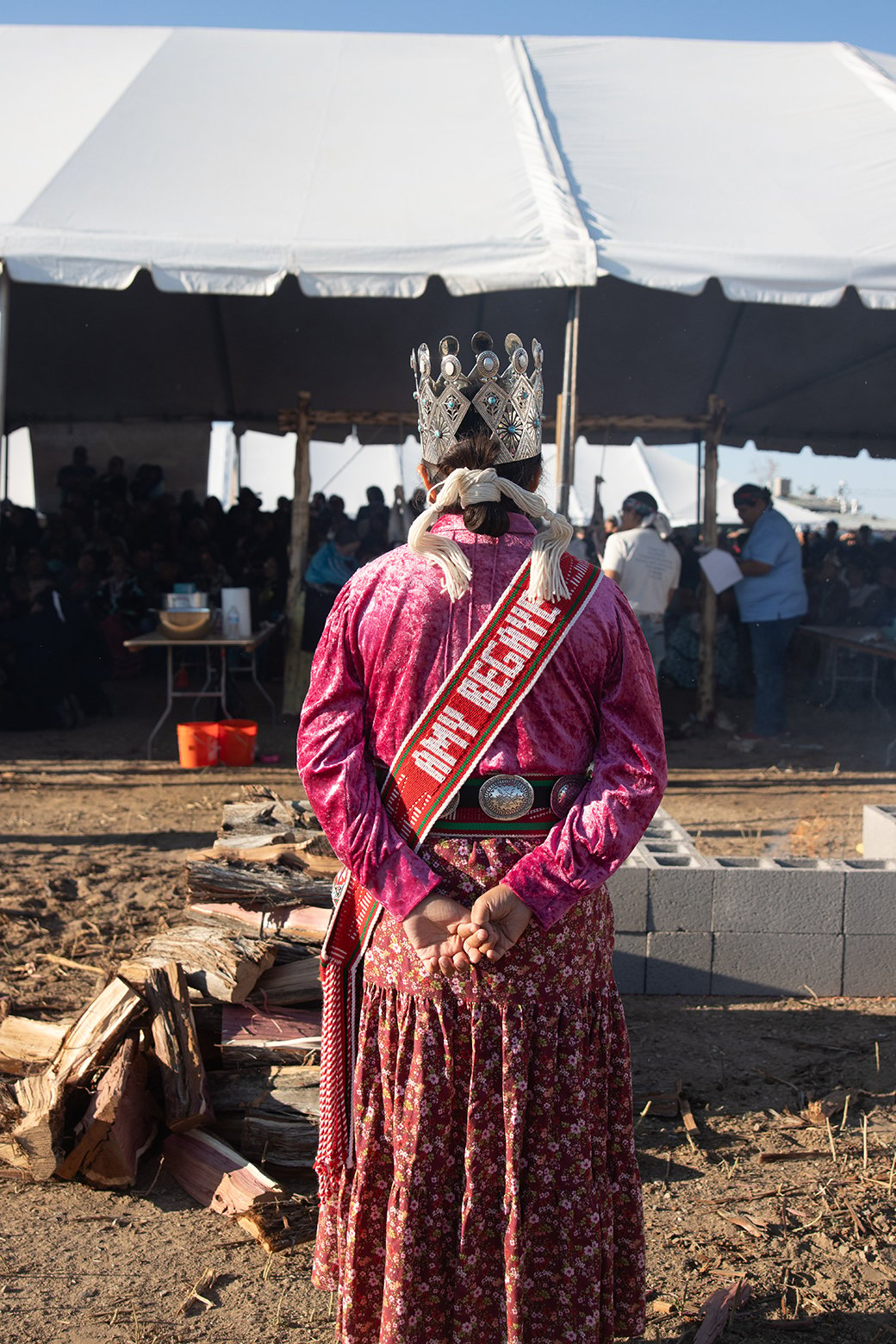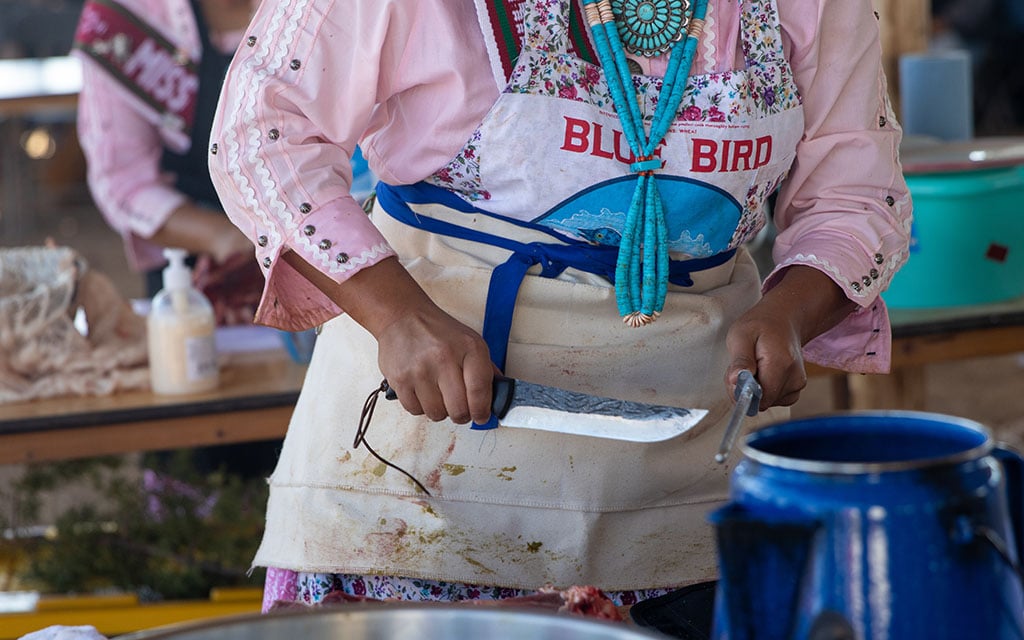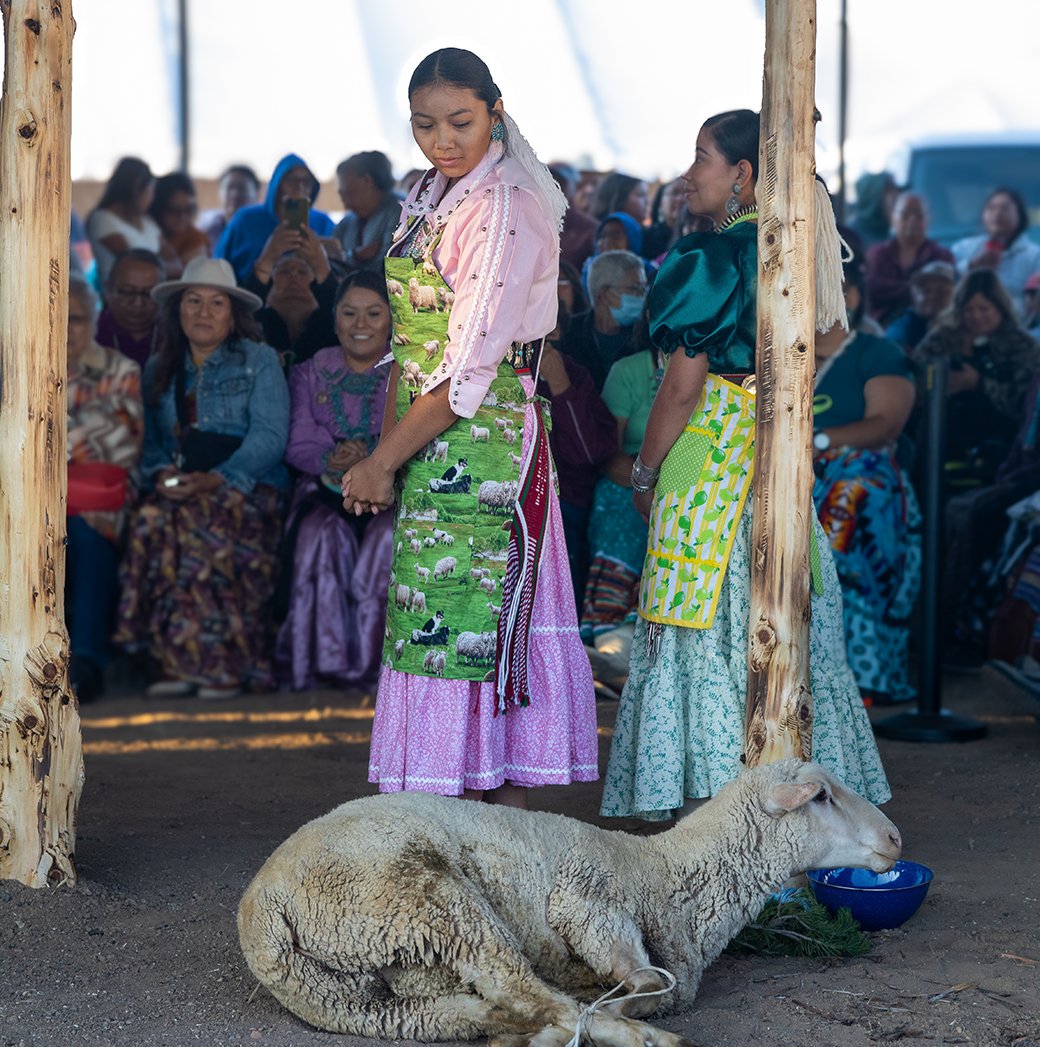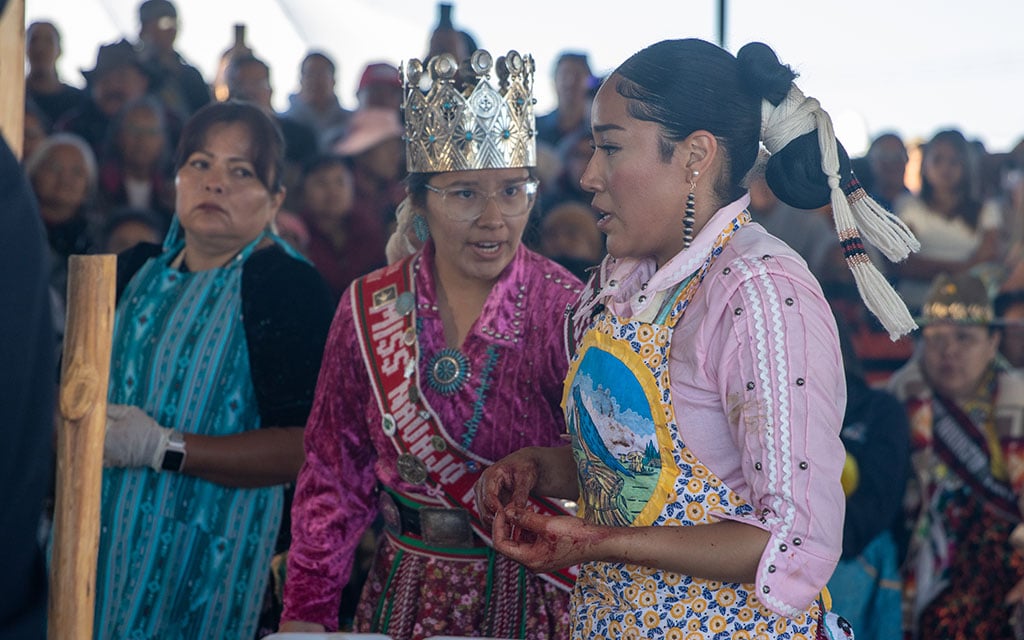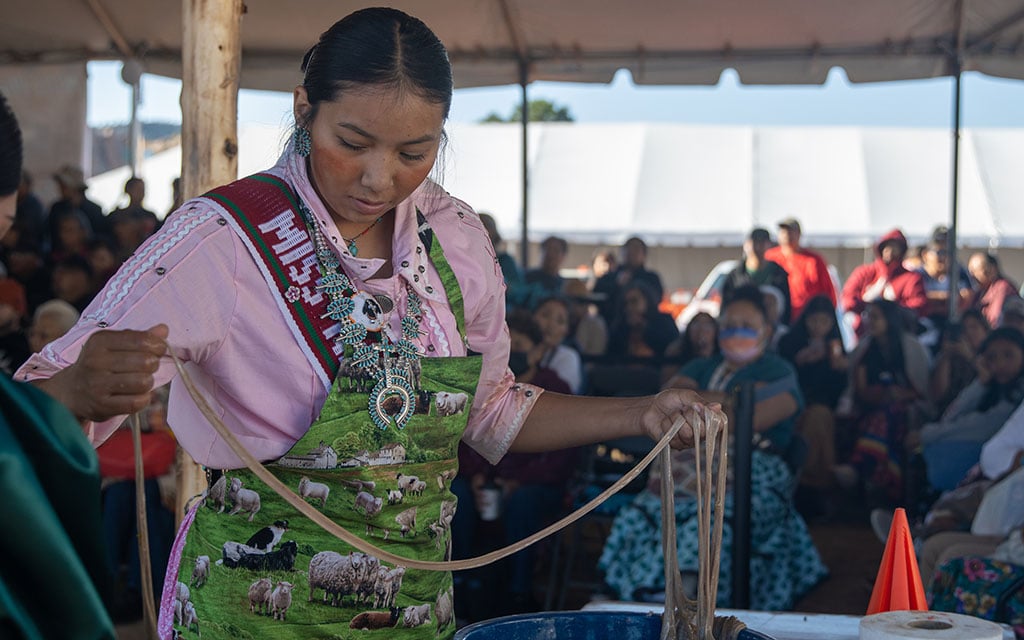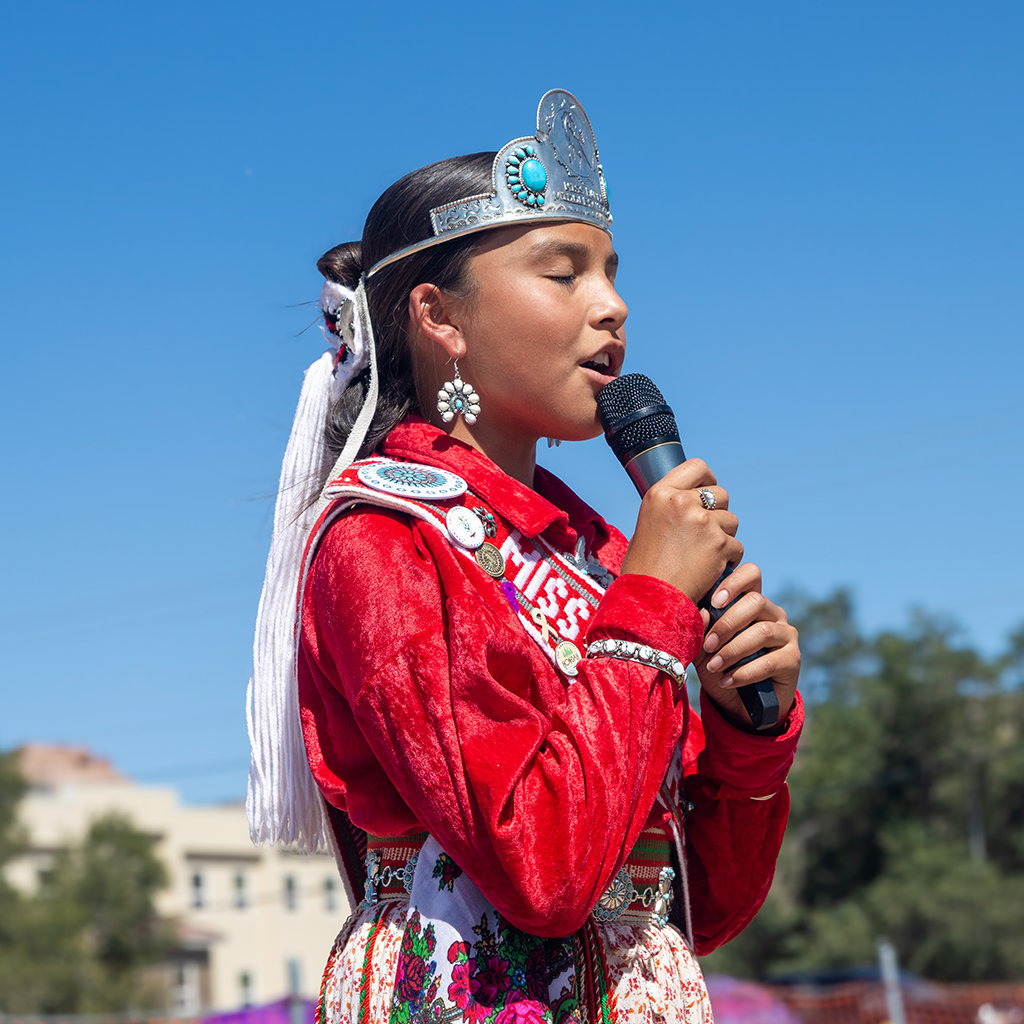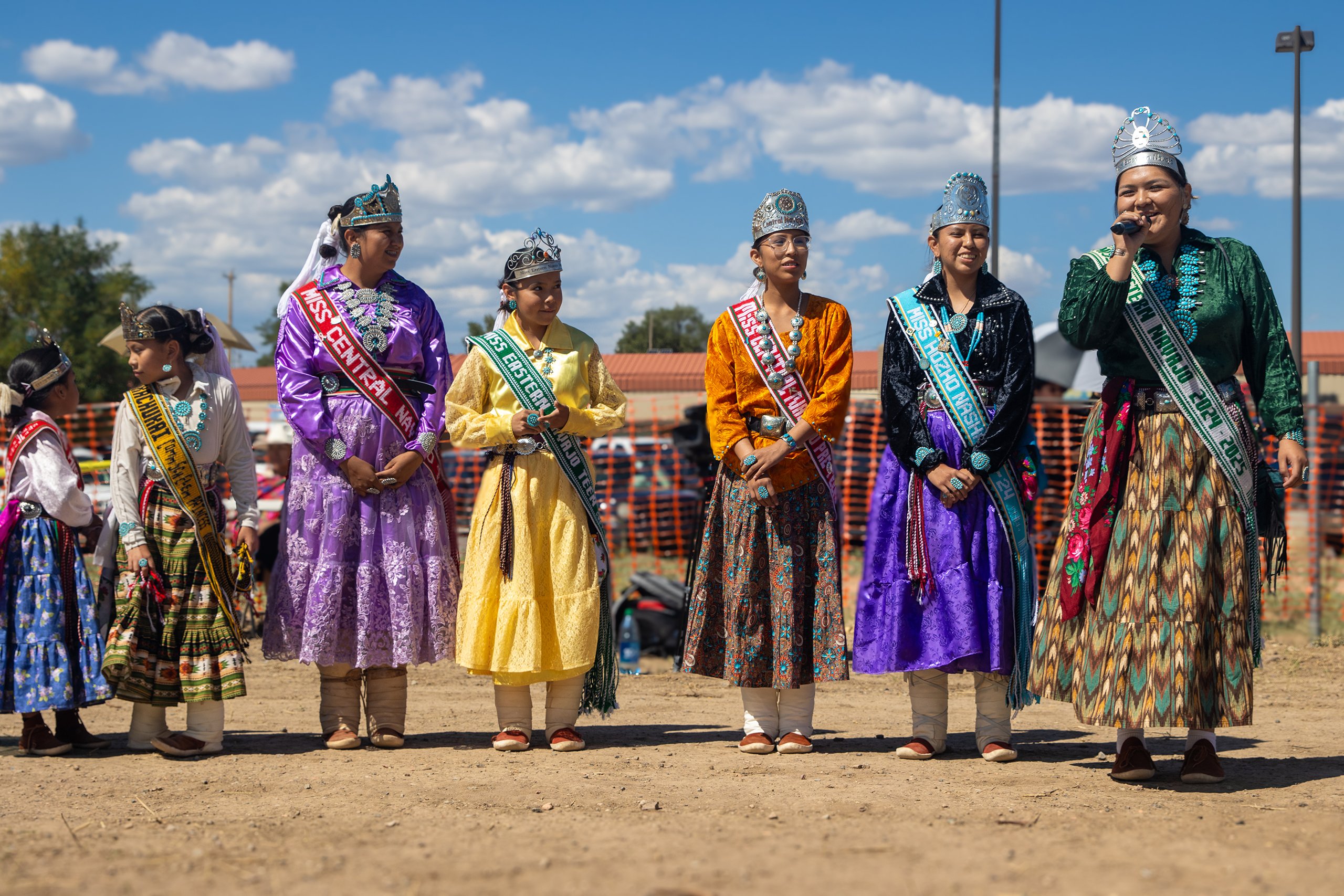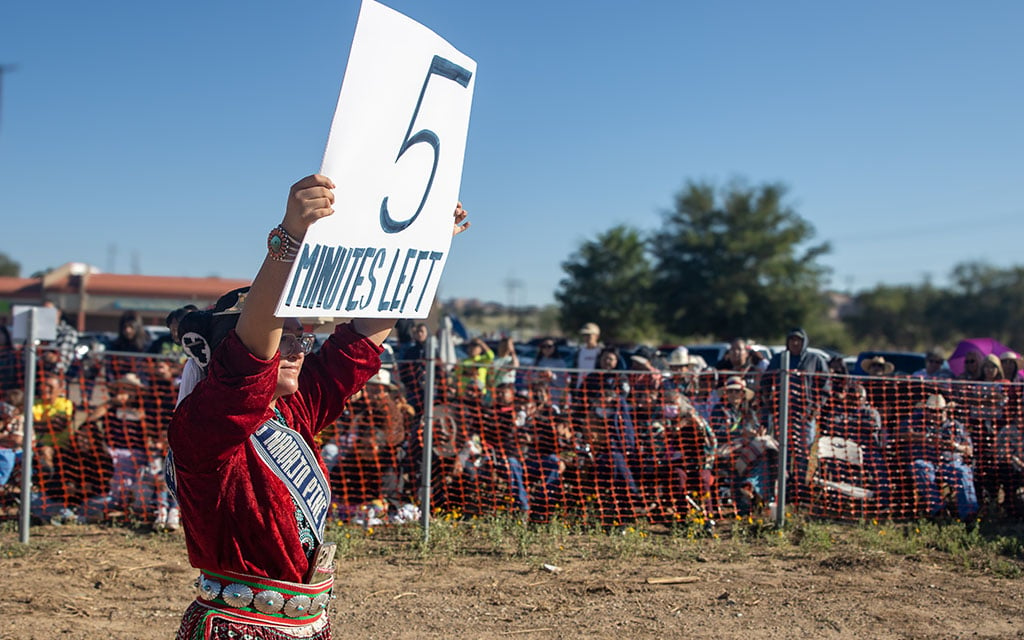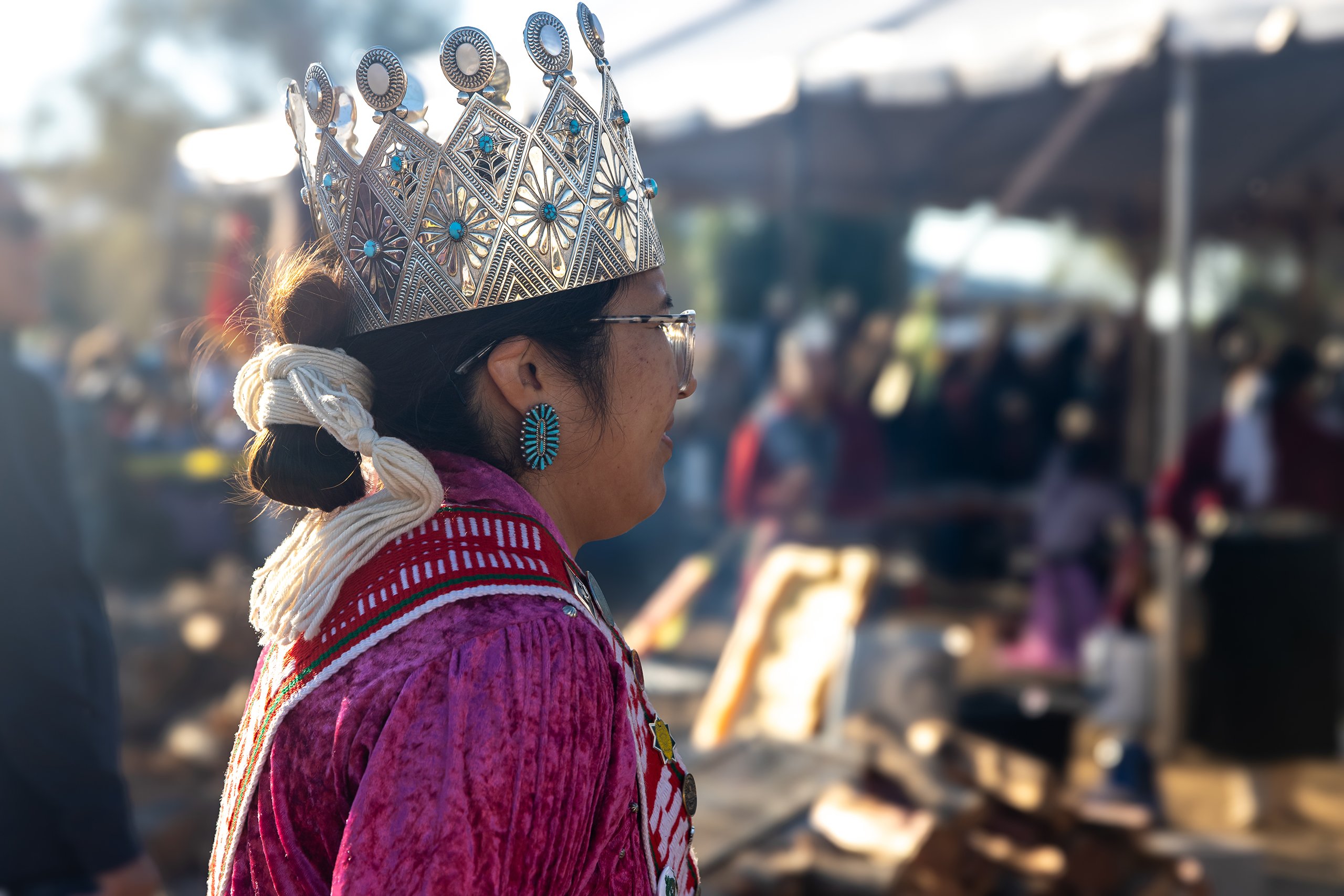The pageant is an annual competition, where a new queen is chosen each year. Unlike most pageants, Miss Navajo Nation looks for the beauty “within oneself,” not merely physical beauty. The event also goes beyond just pageantry – the elected Miss Navajo Nation becomes a representative of the Navajo people, and she wields a strong political influence in the tribal nation.
“We are the only Native American nation to have royalty,” said Jonathan Hale, a former Navajo Nation Council delegate and current Head Start administrator who was the announcer for the pageant.
This was the 72nd year of the annual Miss Navajo Nation. Though the pageant has gone through changes, the focus has remained the same: to empower young women throughout the Navajo Nation and uphold Diné traditions so that they do not become lost.
Miss Navajo Nation is tasked with promoting Navajo culture and language. This was reflected in 1963, when the dual titles for “Miss Traditional Navajo” and “Miss Modern Navajo” were merged back to a singular title, representing the crucial role Miss Navajo Nation must play in leading her nation forward but still preserving traditional customs critical to Navajo identity in the modern age.
As a matrilineal society, a Navajo person’s clan and lineage comes from their mother. Traditionally, women have been thought of as the heads of their households and hold reverence in the Navajo Nation. The Miss Navajo Nation queen represents the cardinal role of “grandmother, mother, aunt and sister,” acting as an important familial figure and friend to the Navajo people.
“Growing up, you think of Miss Navajo as this woman that really can do anything,” said Navajo Nation President Buu Nygren. The pageant “just really showcases how strong and resilient our Navajo women are.”
It’s also a way to celebrate and encourage other Navajos to learn homesteading and traditional ways of life.
“It’s a way for our people to recognize and continue to celebrate our way of life – singing our songs, speaking our language, learning about how food is prepared, butchering,” Nygren said.
The most anticipated event of the pageant
The women’s first big competition of the pageant: butchering a live sheep.
Sage is used to bless the sheep and give thanks for the animals’ lives before the competitors slaughter them. The women use a sharp knife to slit the sheep’s throat, lessening the suffering of the animal and providing a quick death. They only have one hour to butcher their sheep.
Each of the women were assisted by young volunteers, many of whom were also titleholders of various lower-division pageants throughout the Navajo Nation.
During the butchering, the women work methodically – despite the time limit, the sheep butchering competition is not about speed. It’s about precision and skill. Sloppy cuts could cost the women points from the judges and be seen as disrespectful to the sheep – animals are highly regarded in Navajo culture.
